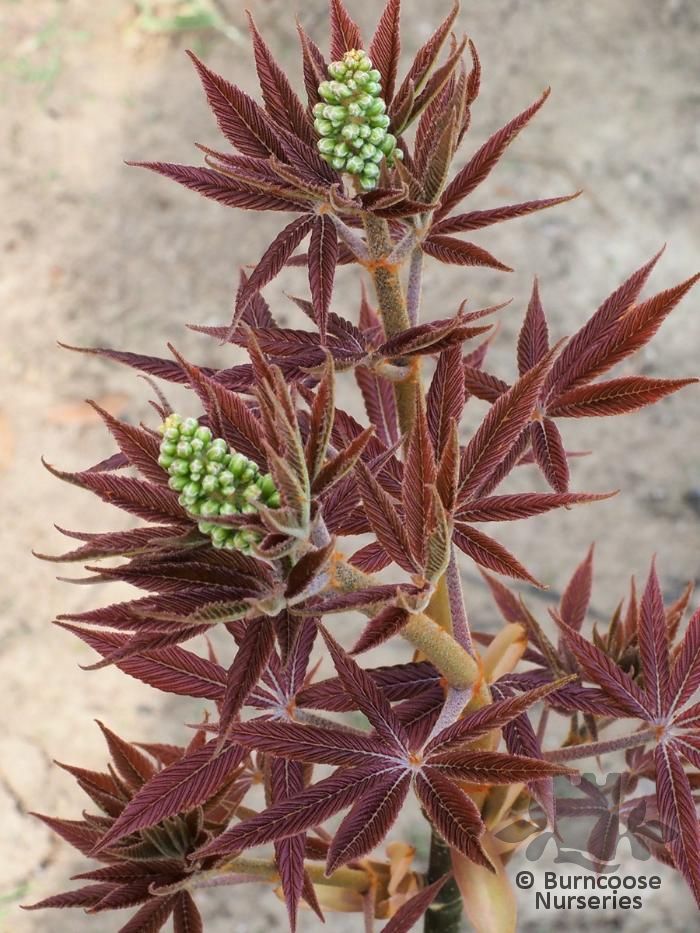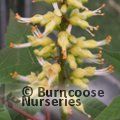AESCULUS glabra 'April Wine'

<




>
AESCULUS glabra 'April Wine'
Commonly known as Buckeye, Ohio Buckeye
Young leaves a deep wine-red. Pale yellow flowers. A small growing from suitable for smaller gardens
Full Plant Details - Sun/Soil & other attributes
-
Floweringlocal_floristJanlocal_floristFeblocal_floristMarlocal_floristAprlocal_floristMaylocal_floristJunlocal_floristJullocal_floristAuglocal_floristSeplocal_floristOctlocal_floristNovlocal_floristDec
-
 Good to know
Wildlife plant. Nectar and pollen for insects
Good to know
Wildlife plant. Nectar and pollen for insects -
 Pests & Diseases
Scale insects, leaf miners, canker, coral spot, leaf blotch
Pests & Diseases
Scale insects, leaf miners, canker, coral spot, leaf blotch -
 Place of origin
Central and eastern USA
Place of origin
Central and eastern USA -
Deciduous5-palmate, glossy leaves with obovate to ovate, long-pointed leaflets to 15cm (6in) long
-
 White
White
-
PaniclesConical panicles to 15cm (6in) tall
-
Suitable for small gardens
-
Fully hardy
-
Purple
-
 Palmate
Palmate
-
 Obovate
Obovate
-
 Ovate
Ovate
-
 Height
4m (13ft)
Height
4m (13ft) -
 Spread
3m (10ft)
Spread
3m (10ft) -
TreeShrubby tree. Leaves turn purple-green in summer and dark red in autumn. Flower candles are followed by warty, sparsely prickly fruit
-
 Pruning group 1
Suitable for: Deciduous and evergreen trees, and some deciduous shrubs.
Pruning group 1
Suitable for: Deciduous and evergreen trees, and some deciduous shrubs.
Pruning: Minimal pruning required. Prune wayward or crossing branches to maintain a healthy framework.
When: When dormant in the late winter/early spring. Some in the summer/autumn to prevent bleeding of sap.
-
 Very hardy
Hardy in the severest continental climates including exposed upland locations in the UK. Plant can withstand temperatures < -20 (-4°F)
Very hardy
Hardy in the severest continental climates including exposed upland locations in the UK. Plant can withstand temperatures < -20 (-4°F) -
Spring Seasonal Interest
-
Summer Seasonal Interest
-
Fertile moist well-drained soil
-
 Full sun
Full sun
-
 Partial shade
Partial shade
-
 harmful if eaten
People and pets, i.e. cats, dogs, rabbits, rodents, notably dogs
harmful if eaten
People and pets, i.e. cats, dogs, rabbits, rodents, notably dogs -
Broadly conical
-
 Bee friendly
Bee friendly
-
Mature Size4m (13ft)


3m (10ft)
View Detailed Plant Description
View Planting Tips and Care Advice
Aesculus - Growing Guide







